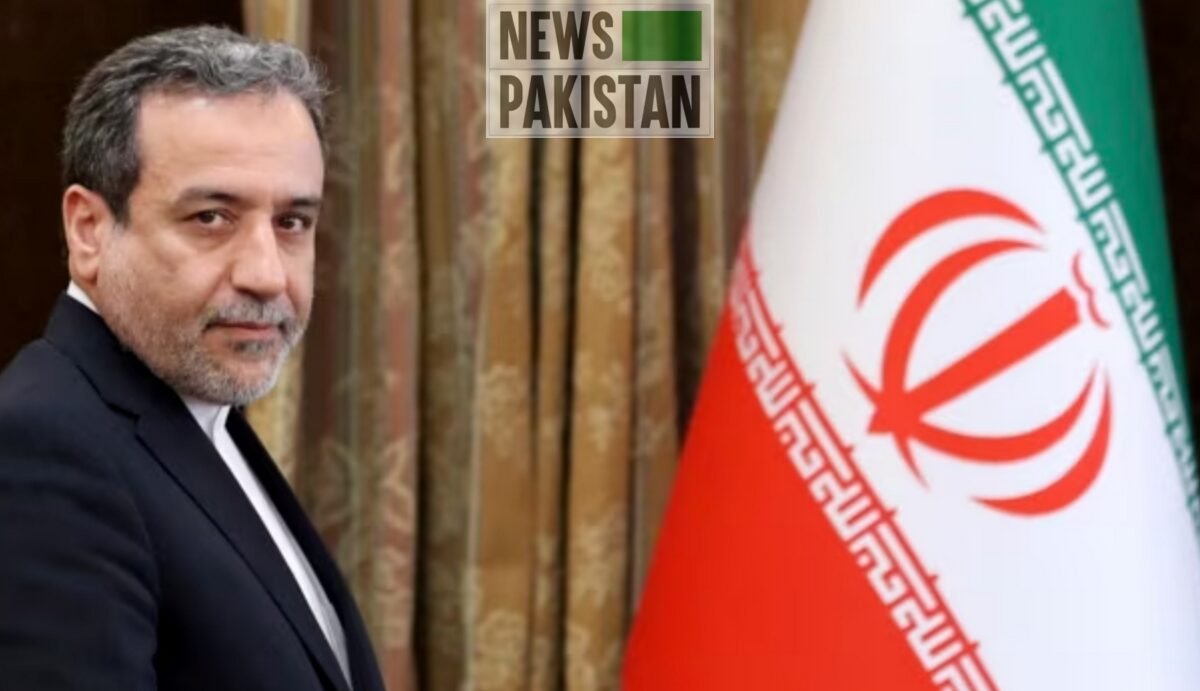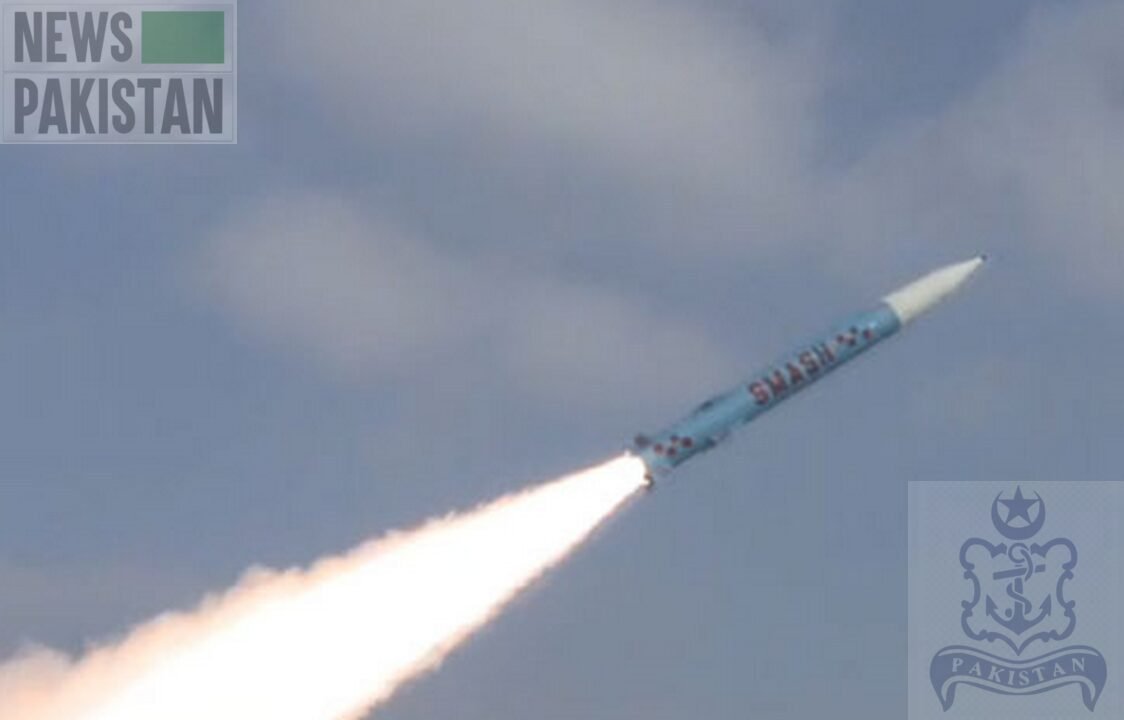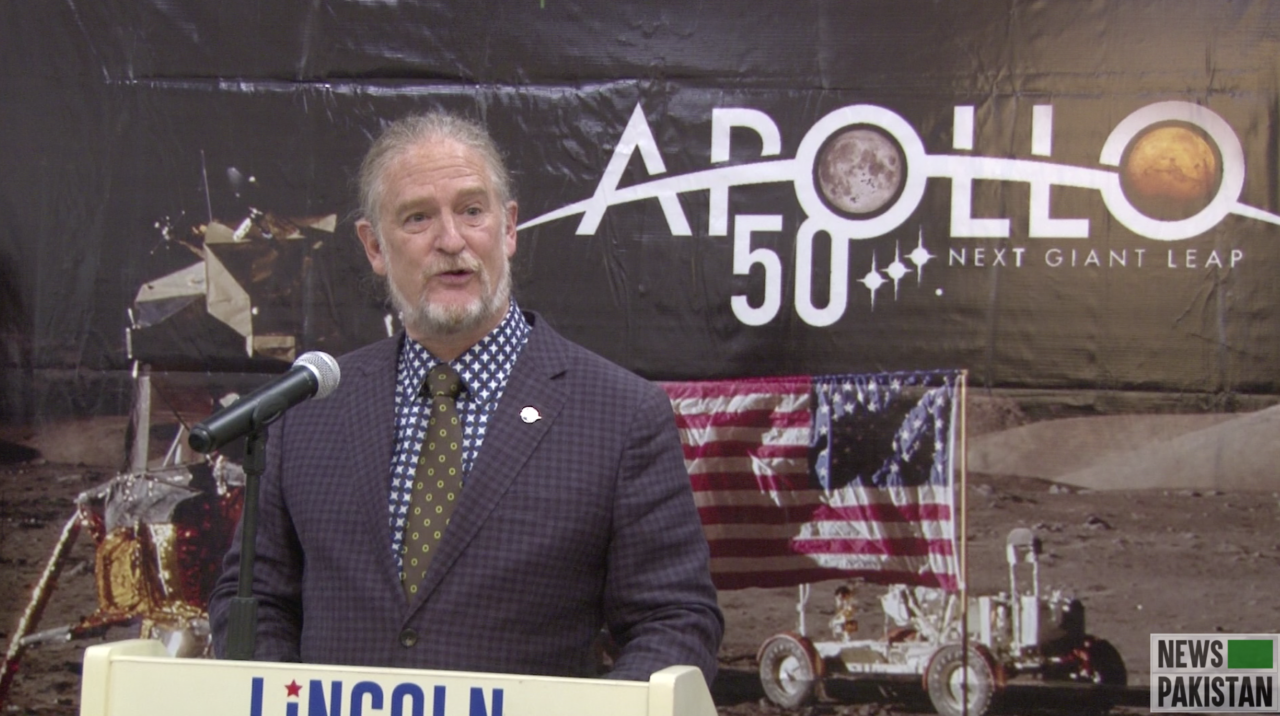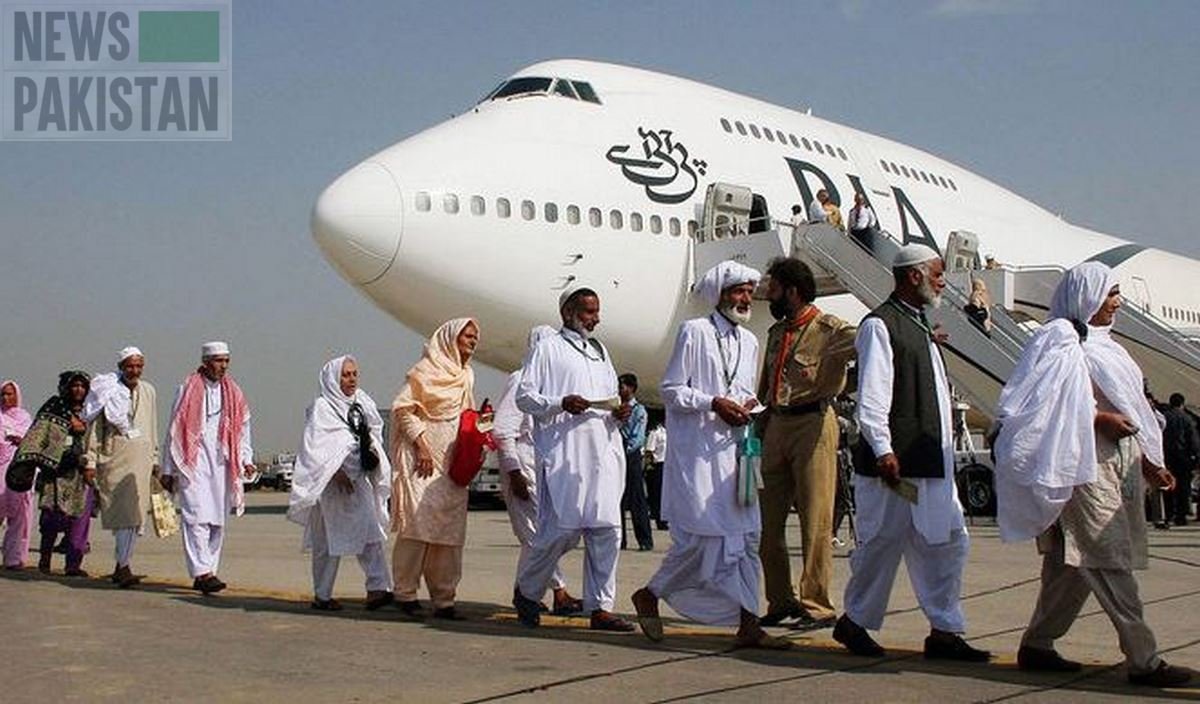KARACHI: Venue was the Lincoln Corner where today (Saturday 20th of July, 2019) the Acting Consul General of USA Darian Arky here has inaugurated a photo exhibition featuring Apollo 11 mission half century ago & Pakistan’s connection to the Apollo program.
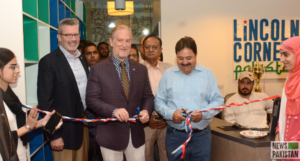
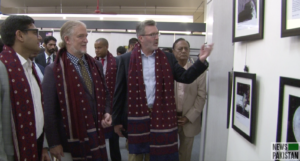
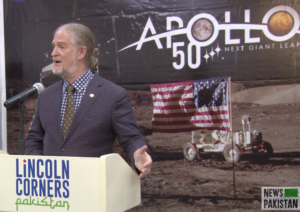
Consul General Darian Arky told that Eugene Cernan (- who once exclaimed: “Went to explore the Moon and in fact discovered the Earth!” -) and the crew of Apollo 17, the final manned mission to the Moon, visited Pakistan in 1973: “Arriving in the modern-day successor to the ancient civilization of the Indus River Valley, they brought with them a piece of Moon rock from Taurus-Littrow Valley. As I looked through the newspaper photos of the American astronauts chatting with Pakistani students, scientists and journalists amidst throngs of onlookers whose smiles beamed with almost lunar brightness. I felt I had a clue of what Cernan meant about discovering Earth. Luckily for any of us we don’t have to go all the way to the Moon to gather rocks if what we are searching for is the commonality of our humanness.”

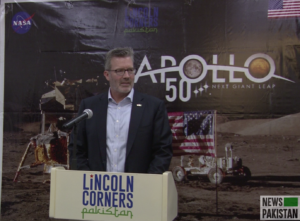
_________________________________________________________
Relevant I:
HOUSTON: “That’s one small step for man, one giant leap for mankind”: it was with these words that Neil Armstrong became the first person to set foot on the Moon 50 years ago, an occasion celebrated by space enthusiasts globally Saturday.
The era-defining event was watched by more than half a billion people around the world, and represented one of humanity’s greatest achievements.
In the US, its 50th anniversary has revived public enthusiasm for crewed space flight, as NASA charts out new missions to the Moon and on to Mars.
At 4:18pm ET (2018 GMT) on July 20, 1969, the lunar module carrying Armstrong and crewmate Buzz Aldrin touched down on the Sea of Tranquility, following a four-day journey.
NASA replayed the original CBS footage online.
“Houston, Tranquility Base here. The Eagle has landed,” Armstrong said.
A little over six hours later, at 10:56pm ET (0256 GMT Sunday), Armstrong climbed out of the lunar module and uttered his immortal words — which he later said he thought about during the flight and prior to exiting Eagle.
Aldrin followed about 20 minutes later, exclaiming: “Magnificent desolation.”
The pair spent about two-and-a-half hours on the surface, carrying out scientific experiments and collecting samples.
“We had the problem of the five-year-old boy in a candy store,” Armstrong would later go to say. “There are just too many interesting things to do.”
In Houston on Saturday night, thousands of space enthusiasts descended upon the visitor area of the NASA Johnson Space Center for a countdown to the “Moonversary,” and watched a giant screen that replayed the iconic moments, before fireworks lit up the sky.
NASA has been in overdrive for several weeks to mark the anniversary, with exhibits and events around the country, including projecting the giant Saturn V rocket and clips from the mission on the Washington Monument.
“Looking back, landing on the moon wasn’t just our job, it was a historic opportunity to prove to the world America’s can-do spirit,” Aldrin, 89, tweeted.
Earlier in the day, Vice President Mike Pence delivered a speech from Cape Canaveral, from where Armstrong, Aldrin and Michael Collins, the third crew member, took off.
All three men were born in 1930, and Armstrong died in 2012.
“Apollo 11 is the only event in the 20th century that stands a chance of being widely remembered in the 30th century,” Pence said.
NASA has declared its intention to return to the Moon by 2024 under the Artemis program — the twin sister of Apollo in Greek mythology – and this time place the first woman on its surface.
It plans to establish a lunar orbiting platform, called a “Gateway,” studying how living organisms react to the radiation and micro-gravity of a deep space environment over a long period, as it looks ahead to a crewed Mars mission in the 2030s.
Experts doubt that the space agency can meet its current goals on time. None of the key elements – the rocket, crew capsule, lander, or orbital station, are yet ready.
Relevant II:
HOUSTON: Houston’s Space Center counted down Saturday night to the exact moment 50 years ago that Neil Armstrong became the first person to set foot on the Moon, marking one of humanity’s greatest achievements.
Thousands celebrated the “Moonversary” with fireworks and music as a giant screen showed footage of the era-defining moment.
After spending a few moments at the foot of the ladder of lunar module Eagle, where he and Buzz Aldrin had landed six hours earlier, Armstrong stepped onto the surface of our natural satellite at 10:56 pm (0256 GMT) on 20th day of July, 1969.
“That’s one small step for man, one giant leap for mankind.”
app
Relevant pieces published earlier:
CAPE CANAVERAL: Fifty years after a mighty Saturn V rocket set off from Florida carrying the first humans to the Moon, a veteran of the Apollo 11 crew returned to the fabled launch pad today to commemorate the event that defined an era.
“We crew felt the weight of the world on our shoulders, we knew that everyone would be looking at us, friend or foe,” command module pilot Michael Collins said from the Kennedy Space Center.
He and Buzz Aldrin, who piloted the lunar module that detached from the spacecraft and landed on the Moon’s surface, are the two surviving members from the mission that would change the way humanity saw its place in the universe.
Their commander Neil Armstrong, the first man on the Moon, passed away in 2012 aged 82.
Their spacecraft took four days to reach the Moon, before the module known as “Eagle” touched the lunar surface on July 20, 1969. Armstrong emerged a few hours later.
Collins remained in lunar orbit in the command module Columbia, their only means of returning back to Earth.
“I always think of a flight to the moon as being a long and fragile daisy chain of events,” the 88-year-old said at the first of several events planned across the week to mark the anniversary.
Collins described how the mission was broken into discrete goals such as going faster than the Earth’s escape velocity — the speed needed to break free of the planet’s gravitational pull — or slowing down for lunar orbit.
“The flight was a question of being under tension worrying about what’s coming next. What do I have to do now to keep this daisy chain intact?”
Aldrin has remained relatively more elusive and did not participate at Tuesday’s launchpad event.
Aging but active on Twitter, and always seen in stars-and-stripes socks, the 89-year-old has faced health scares and family feuds, culminating in a court case over finances, which was settled in March.
He is the second man to have stepped foot on the Moon. Only four of the 12 men who have done so remain alive.
Collins, however has been fielding questions for half a century about whether he felt lonely or left out.
“I was always asked wasn’t I the loneliest person in the whole lonely history of the whole lonely solar system when I was by myself in that lonely orbit?” he said. “And the answer was ‘No, I felt fine!’”
“I was very happy to be where I was and to see this complicated mission unfold.
“I would enjoy a perfectly enjoyable hot coffee, I had music if I wanted to. Good old Command Module Columbia had every facility that I needed, and it was plenty big and I really enjoyed my time by myself instead of being terribly lonely.”
Collins added he was offered the chance to be commander of Apollo 17, but turned it down because he did not want to spend another three years living on the road away from his wife and young children.
Despite the festivities, neither the United States nor any other country has managed to return a human to the Moon since 1972, the year of the final Apollo mission.
President George H.W. Bush promised to do so in 1989, as did his son president George W. Bush in 2004, while pledging to also march forward to Mars.
But they both ran up against a Congress that wasn’t inclined to fund the adventures, and the tide of public opinion had also turned since president John F. Kennedy roused the nation to action in the 1960s.
For his part, President Donald Trump relaunched the race to re-conquer the Moon and Mars after taking office in 2017. But the immediate effect has been to create turbulence within the space agency.
Last week, NASA administrator Jim Bridenstine fired the head of the human space exploration directorate Bill Gerstenmaier, likely over disagreements over the 2024 ultimatum set by Trump to return an American to the Moon.
Five years appears unlikely given that neither the rocket, capsule or lander are yet ready or even finalized.
“We don’t have a lot of time to waste, if we’re going to have new leadership, it needs to happen now,” held Bridenstine.
WASHINGTON: The Apollo 11 mission to the Moon and back 50 years ago went down in history as mankind’s giant leap, changing the way we saw our place in the universe.
But the program was also the catalyst for profound scientific and engineering breakthroughs that reverberate to this day.
It required overcoming myriad technical challenges, a task made possible only by Congress’ decision to hand a blank check to NASA to beat the Soviet Union in the space race.
Overall, the US spent about $150 billion in today’s money on its first three astronaut programs.
“Apollo provided a laboratory for people to really get down into the solving the huge engineering problems facing us,” Brian Odom, a historian at NASA Marshall Space Flight Center, told the
The Saturn V rocket spearheaded by a team of ex-Nazi scientists remains the most powerful that has ever been built and provided a blueprint that subsequent missions have all followed.
WASHINGTON: U.S. space agency NASA has selected nine teams to study the moon samples collected during the Apollo missions in the 1970s.
“Stored untouched for approximately 50 years, I’m excited the samples will be opened for the first time to be studied by a new generation of scientists,” Thomas Zurbuchen, associate administrator for NASA’s Science Mission Directorate, tweeted on Monday.
The lunar rocks and soil to be studied are samples collected from Apollo missions 15, 16, and 17, some of which have never been exposed to the Earth’s atmosphere.
In an online statement, NASA mentioned in particular the sample taken from beneath the lunar regolith during Apollo mission 17, which could help scientists “study the rock layers exactly as they existed on the Moon.”
“By studying these precious lunar samples for the first time, a new generation of scientists will help advance our understanding of our lunar neighbor and prepare for the next era of exploration of the Moon and beyond,” Zurbuchen said.
The nine teams include four NASA teams and four universities’ research teams, as well as a team from the U.S. Naval Research Laboratory, sharing an award of 8 million U.S. dollars together.
WASHINGTON: Sue Finley began work at the Jet Propulsion Laboratory as the US prepared to launch its first satellite into orbit in 1958, racing to match the Soviet Union, which had accomplished the feat months earlier.
Now 82, she is one of NASA’s longest-serving women, starting out as one of its “human computers,” whose critical yet long-hidden contributions to the space program, including the Apollo missions to the Moon, are finally being recognized.
Finley had dropped out of college and joined a group of mathematically gifted individuals, overwhelmingly women, whose job it was to solve the complex equations thrown at them by rocket scientists before electronic computing became affordable and reliable.
Neil Armstrong may be remembered for his “giant leap for mankind” when he stepped out onto lunar soil a decade later, but it was the work of these women that helped hone the rocket, invent the propellant, and develop the global antenna network that allowed viewers to watch the crew’s famous live broadcast.
Finley’s story, like many of the other “computers,” is one that speaks to the many challenges faced by women of the time.
WASHINGTON: On December 11, 2017, US President Donald Trump signed a directive ordering NASA to prepare to return astronauts to the Moon “followed by human missions to Mars and other destinations.”
The dates fixed by the space agency are 2024 for the Moon and Mars in 2033, but according to experts and industry insiders, reaching the Red Planet by then is highly improbable barring a Herculean effort on the scale of the Apollo program in the 1960s.
“The Moon is the proving ground for our eventual mission to Mars,” NASA administrator Jim Bridenstine said at a conference this week.
“The Moon is our path to get to Mars in the fastest, safest way possible. That’s why we go to the Moon.”According to Robert Howard, who heads up the lab developing future space habitats at the legendary Johnson Space Center in Houston, the hurdles aren’t so much technical or scientific as much as a question of budget and political will.
“A lot of people want us to have an Apollo moment, and have a president stand up like Kennedy and say, we’ve got to do it and the entire country comes together,” he said.
“If that happened, I would actually say 2027. But I don’t think that’s going to happen. I think in our current approach, we are going to be lucky to do it by the 2037 date.”
But Howard said if he were to be pessimistic, and assume political dithering lay ahead, “it could be the 2060s.”
WASHINGTON: NASA’s next mission to the Moon will be called Artemis, the US space agency announced Monday, though it’s still looking for the money to make the journey happen by its accelerated 2024 deadline.
In March, US President Donald Trump’s administration moved the date for the next American lunar mission up by four years from its original goal of 2028 while pledging to get a female astronaut to the Moon’s surface for the first time.
NASA Administrator Jim Bridenstine told reporters the agency would need an additional $1.6 billion to pay for the new ground and space vehicles needed to meet the deadline.
“This additional investment, I want to be clear, is a down payment on NASA’s efforts to land humans on the Moon by 2024,” he said.
Bridenstine said the mission was named Artemis after the Greek mythological goddess of the Moon and twin sister to Apollo, namesake of the program that sent 12 American astronauts to the Moon between 1969 and 1972.
NASA’s total annual budget is approximately $21.5 billion, and in the 2019 fiscal year, the agency spent about $4.5 billion on developing the Orion spacecraft, the Space Launch System (SLS) heavy rocket and a new lunar orbital mini-station, three elements essential to the Artemis mission.
But many experts and lawmakers are concerned that NASA cannot meet the accelerated deadline, especially given the major delays in development of the SLS, which is being built by aerospace giant Boeing.
Asked how much the new mission would cost in total, Bridenstine demurred, telling a reporter: “I would love to tell you that.”
WASHINGTON: NASA has selected nine teams to study the lunar samples collected during the Apollo missions in the 1970s.
“Stored untouched for approximately 50 years, I’m excited the samples will be opened for the first time to be studied by a new generation of scientists,” Thomas Zurbuchen, associate administrator for NASA’s Science Mission Directorate, tweeted.The lunar rocks and soil to be studied are samples collected from Apollo missions 15, 16, and 17, some of which have never been exposed to the Earth’s atmosphere. In an online statement, NASA mentioned, in particular, the sample taken from beneath the lunar regolith during Apollo mission 17, which could help scientists “study the rock layers exactly as they existed on the Moon.”
“By studying these precious lunar samples for the first time, a new generation of scientists will help advance our understanding of our lunar neighbor and prepare for the next era of exploration of the Moon and beyond,” Zurbuchen said. The nine teams include four NASA teams and four universities’ research teams, as well as a team from the U.S. Naval Research Laboratory, sharing an award of 8 million U.S. dollars together.


